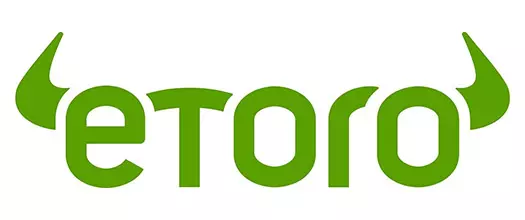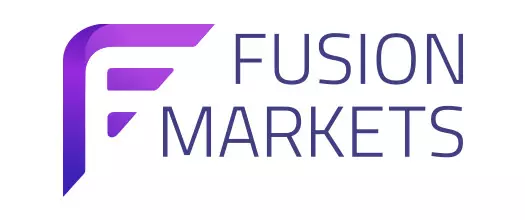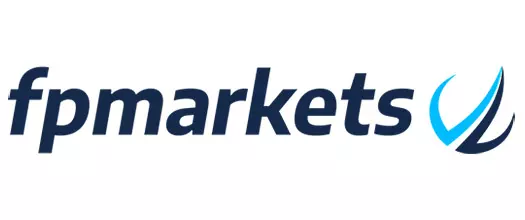- Jump to:
- Main features of the best 1:500 Leverage Forex brokers
- What Is Financial Leverage
- How Does It Works
- Margin
- Leverage and Expected Returns
- Is 1:500 Suitable for You
- Advantages
- Risks
One of the most attractive yet high-risk features of forex trading is leverage. Because it allows traders to open positions that exceed their cash balances, leverage can quickly generate substantial returns. Depending on their regulatory framework, compliant forex brokers may impose limits on the maximum leverage to mitigate the risk for inexperienced retail clients. However, jurisdictions such as the Seychelles, Vanuatu, and the Bahamas often allow traders to use leverage of up to 1:500.
If you are willing to take the risk of trading with higher leverage, we can help you discover several reputable brokers offering leverage of up to 1:500. Have a look at our table below, showing some of the top forex brokers with higher leverage ratios.
 Plus500 USThis content applies only to Plus500 US and clients from the United States. Trading futures involves the risk of loss.
Plus500 USThis content applies only to Plus500 US and clients from the United States. Trading futures involves the risk of loss. eToro61% of retail investor accounts lose money
eToro61% of retail investor accounts lose money Fusion Markets74-89% of retail's CFD accounts lose money
Fusion Markets74-89% of retail's CFD accounts lose money FP Markets73.85% of retail investor accounts lose money
FP Markets73.85% of retail investor accounts lose money Global Prime74-89% of retail CFD accounts lose money
Global Prime74-89% of retail CFD accounts lose money Pepperstone75.5% of retail investor accounts lose money
Pepperstone75.5% of retail investor accounts lose money
In this review, you can find a comparison table of forex brokers that offer 1:500 leverage. We rank them based on several factors, including regulation, spreads and commissions, Trustpilot rating, range of available markets, supported platforms, and deposit and withdrawal methods.
Our team has thoroughly evaluated all brokers listed below using TradingPedia’s exclusive methodology.
Main features of the best 1:500 leverage forex brokers
- Brand
- Trading platforms
- Minimum deposit
- Regulations
- Trading instruments
- Spreads
- Leverage for Forex CFDs
- Leverage for Crypto CFDs
- Leverage for Indices CFDs
- Deposit methods
- Withdrawal Methods
- Commission per Lot
- Contact details
If you want to be a successful online trader, you must understand the global markets and know the basics of trading. One of the first things every beginner needs to learn about is leverage – what it is, and how to use it to maximise profits. Furthermore, different forex brokers may offer leverage ranging from 1:5 all the way up to 1:1000, and traders need to decide which ratio is suitable for their strategy and risk appetite.
Leverage is a crucial component of many trading strategies, but its use and importance vary widely depending on a trader’s individual goals and risk tolerance. While it can magnify profits, leverage also significantly increases risk, which is why some successful strategies, particularly long-term ones, may use it sparingly or not at all.
Forex traders use leverage to amplify their potential profits from currency exchange rate fluctuations. It functions as a line of credit that a broker extends to its clients. For example, if a broker offers 1:500 leverage, it is providing $500 in purchasing power for every dollar of your own capital.
What is financial leverage?
Before exploring leveraged trading, it is essential first to understand how leverage works and how it is applied to products like Contracts for Difference (CFDs). In finance, leverage is the practice of using borrowed money (debt) to increase the potential return of an investment. It is a powerful tool that allows individuals and companies to control assets or positions much larger than their own capital would permit. This is often described as a ‘double-edged sword’ because it amplifies not only the potential profits but also the potential losses.
For businesses, leverage can mean taking out a loan to fund an expansion or acquire new equipment. By using debt, a company can grow its operations and generate returns that, ideally, far exceed the cost of borrowing. For an individual investor, leverage might involve using a margin account to buy more assets or taking out a mortgage to purchase a home. In all these cases, leverage increases your financial capacity.
Leverage is typically expressed as a ratio (for example, 1:100 or 1:500), which indicates how many times a trader’s capital is being magnified. A higher ratio means greater leverage and, consequently, a higher risk of significant losses if the market moves against the position. In this context, leverage is directly tied to the concept of margin, which is the amount of capital a trader must have to open a leveraged position. A higher leverage ratio means a lower margin requirement, and vice versa.
How does leverage work in forex?
Leverage in forex trading is a powerful tool that allows you to control a much larger position in a currency pair than your account balance would otherwise permit. It is essentially a temporary loan from your broker that amplifies your trading power.
Brokers express leverage as a ratio, such as 1:500. This ratio indicates that for every dollar of your capital, the broker can provide $500 in additional funds. With an account balance of $1,000 and leverage of 1:500, you can open a position with a total value of $500,000. This increased purchasing power allows you to capitalise on small fluctuations in currency prices, which would be challenging with less capital.
While it can lead to substantial profits from small market movements, leverage can also dramatically amplify losses if the market turns against you. Therefore, understanding and using leverage responsibly is crucial for effective risk management in forex trading. It is also important to consider the margin requirements set by your broker, as these dictate the minimum amount of capital you must have to open and maintain a leveraged position.
Margin
Forex brokers require a certain amount of funds to be deposited in the trading account as collateral to cover the risk associated with using leverage. This deposit is called margin, and leveraged trading is sometimes referred to as trading on margin. Each broker has a different margin requirement, based on the type of account (retail or professional), the available cash balance, and the asset class.
The initial margin requirement is usually displayed as a percentage of the total transaction value, and could be 0.5%, 1%, 2%, and so on. There are various formulas for margin and leverage that can clearly show how these two fundamental concepts are linked. For instance, we can calculate the margin by dividing the value of the transaction by the leverage.
Let’s consider a scenario where you want to buy one standard lot of the EUR/USD pair using a US dollar-denominated account. A standard lot is equal to €100,000. To determine the margin required for this position, you first need to convert the transaction’s value into your account’s currency, the US dollar in this case.
If the current exchange rate is 1.1000, the total value of your transaction is $110,000 (€100,000 x 1.1000). To calculate the margin, you divide the total transaction value by your leverage ratio. With 1:500 leverage, the margin required would be:
$110,000 / 500 = $220
This $220 is the amount of your capital that the broker will hold as collateral to keep the position open. If your account balance is $1,000, your usable equity (or free margin) would be $780 ($1,000 – $220). You can use the remaining portion of your balance to open new positions or absorb your potential losses from the EUR/USD trade.
Leverage and expected returns
Leverage allows you to control a larger trade with a smaller amount of capital. Your profit is not calculated based on your initial capital, but on the total value of the position you have opened. Let’s use a concrete example with a 100,000-unit (or 1 standard lot) position in the EUR/USD pair. Suppose you enter a buy position at a price of 1.1698.
To open this position without leverage, you would need $116,980 of your own capital. If the price rises to 1.1708 (a 10-pip increase), your profit would be $100. You can open that exact same $116,980 position with 1:500 leverage and a margin of just $233.96 ($116,980 / 500). If the price again moves to 1.1708, your profit is still $100.
It is important to point out that leverage does not multiply your profits per se but rather gives you the buying power to open a larger position, allowing you to earn a greater return on your initial margin. The risk, however, is that a 10-pip loss would also be $100, which represents a loss of over 40% of your initial $233.96 margin.
Is 1:500 suitable for you?
When determining what leverage to use, traders should take several important factors into consideration. First of all, they should keep in mind that 1:500 is an extremely high ratio and is not allowed in many jurisdictions due to the high risk of losing one’s capital. This includes major forex markets such as the US, Japan, and the European Union, where brokers are required to restrict the leverage offered to retail clients. In the EU and Australia, for instance, retail traders can obtain maximum leverage of 1:30 for major currency pairs.
The high risk of excessive leverage also means that traders should be skilled and have sufficient experience in the foreign exchange market before using 1:500 leverage. Another thing they should consider is their strategy and overall trading style. Traders who engage in short-term strategies, such as day trading or scalping, often prefer higher leverage ratios like 1:100 or 1:500. This is because their goal is to profit from small, rapid price movements.
Since these movements are often only a few pips, a high-leverage ratio is needed to open a large enough position to make the trade worthwhile. With a larger position, a small price change can generate a meaningful profit. Conversely, swing and position traders holding positions for days, weeks, or even months tend to use lower leverage to protect their capital from larger, unpredictable market swings.
Advantages of 1:500 leverage
One of the main reasons the forex market has become so popular among retail traders in recent years is the opportunity to use high leverage, which allows them to maximise their limited capital. The availability of high leverage ratios like 1:500 has become more restricted for retail traders in major markets like the EU and Australia, due to regulatory intervention aimed at creating a safer trading environment for retail market participants.
However, many reputable brokers operating in other jurisdictions continue to offer these leverage ratios. Although such high levels of leverage may seem too extreme to some traders, they do provide the chance to increase potential profits by up to 500 times compared with any profits that could be generated without leverage.
Leverage provides a distinct advantage by allowing traders to access significantly larger positions without needing to pay interest on the borrowed funds. While it functions as a line of credit from the broker, there are no upfront debt repayments or interest charges for the leverage itself. Instead, the only transaction costs, such as spreads, are transparently displayed by the broker and applied to the full position size.
Last but not least, traders should understand that in most cases, leveraged trading is the only way for them to access the foreign exchange market. Typically, transaction volumes here reach six- or seven-digit amounts, and only a handful of retail traders could afford to open trades with their own equity. With the use of leverage, retail participants can access the same markets as leading banks, hedge funds, and other institutional traders, giving them the ability to open positions of a similar scale and capitalise on price movements.
Risks of using 1:500 leverage
Leveraged trading is inherently tied to both the potential for significant profits and the risk of substantial losses. While traders use leverage to magnify gains, it equally amplifies the financial losses from an unsuccessful trade. This is a danger often underestimated by beginner traders. Enticed by the promise of huge returns, they might use high leverage ratios like 1:500 without a solid strategy or sufficient market knowledge. This can cause them to lose their entire capital within a matter of days, or even hours.
Margin calls are another major risk. If the market moves against you and your account equity drops below the required maintenance margin, your broker may demand additional funds. Failing to provide them can lead to forced liquidation of your positions, resulting in substantial losses.
High leverage can also increase your overall trading costs, such as spreads and overnight swap fees, as these are calculated based on full position size. Lastly, the high-risk nature of leveraged trading can potentially create psychological pressure, leading to emotional and often poor decision-making.
Effective risk management is paramount when using high leverage. Traders must employ a robust strategy that includes setting adequate stop-loss orders to limit their potential losses and using appropriate position sizing to ensure that no single position exposes a significant portion of their balance to extreme risk.









